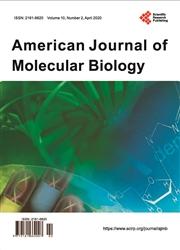Effect of Methanol Extract of Gomphrena celesioides on Chloroquine-Induced Hepatotoxicity and Oxidative Stress in Male Wistar Rats
引用次数: 0
Abstract
Hepatic injury has been reported to be associated with chloroquine therapy. Gomphrena celesioides has been claimed to have pleiotropic protective properties in the liver by traditional herbal practitioner but there is no scientific evidence to this claim. This investigation therefore sought to evaluate the effect of Gomphrena celesioides administration on chloroquine-induced hepatic injury in rats. Forty adult male rats were divided into five groups of eight rats and were treated orally once daily. Rats in group one received 1 ml/kg body weight of 0.9% normal saline; rats in group two received 250 mg/kg body weight of chloroquine for three days; groups three, four and five rats were pre-treated with 200 mg/kg, 400 mg/kg and 800 mg/kg body weight of methanol extract of Gomphrena celesiodes for three days and on the fourth day were given 250 mg/kg body weight of chloroquine for three days. The experiment lasted for seven days. Liver injury was manifested biochemically by a significant increase in serum level or activities of hepatic markers (aminotransferases, alkaline phosphate, bilirubin, cholesterol and gamma glutamyl transferase). In addition, hepatic tissue from chloroquine-treated rats showed a significant increase in lipid peroxidation with a decrease in hepatic superoxide dismutase, catalase, glutathione peroxidase, glutathione-S-transferase and glutathione reservoirs. Moreover, the liver histopathologic evaluation revealed significant in chloroquine-treated rats. Gomphrena celesioides administration significantly alleviated chloroquine-induced pathologic changes in serum biochemistry and liver tissue. The results also suggest that Gomphrena celesioides possesses protective properties against chloroquine-induced liver injury via mitigation of drug-induced oxidative stress and its consequent events.天青石甲醇提取物对氯喹所致雄性Wistar大鼠肝毒性和氧化应激的影响
据报道,肝损伤与氯喹治疗有关。传统的草药从业者声称贡芬草对肝脏有多效保护作用,但没有科学证据证明这一说法。本研究旨在探讨贡麻对氯喹所致大鼠肝损伤的影响。将40只成年雄性大鼠分为5组,每组8只大鼠,每日口服1次。第一组大鼠灌胃0.9%生理盐水1 ml/kg体重;第二组大鼠连续3天给予250 mg/kg体重的氯喹;第3、4、5组大鼠分别按体重200、400、800 mg/kg的松麻甲醇提取物预处理3 d,第4天按体重250 mg/kg的氯喹预处理3 d。实验持续了7天。肝损伤的生化表现为血清中肝脏标志物(转氨酶、碱性磷酸酶、胆红素、胆固醇和谷氨酰转移酶)水平或活性显著升高。此外,氯喹处理大鼠肝组织脂质过氧化显著增加,肝脏超氧化物歧化酶、过氧化氢酶、谷胱甘肽过氧化物酶、谷胱甘肽s -转移酶和谷胱甘肽储库减少。此外,肝脏组织病理学评价显示氯喹处理大鼠显著。给药后明显减轻了氯喹引起的血清生化和肝组织病理改变。结果还表明,Gomphrena celesioides通过减轻药物性氧化应激及其后续事件对氯喹诱导的肝损伤具有保护作用。
本文章由计算机程序翻译,如有差异,请以英文原文为准。
求助全文
约1分钟内获得全文
求助全文

 求助内容:
求助内容: 应助结果提醒方式:
应助结果提醒方式:


